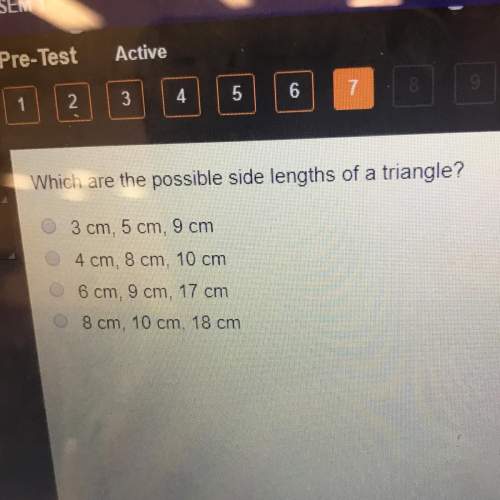
Mathematics, 04.11.2019 14:31 anaiah13
The vertices of a quadrilateral abcd are a(-3, 4), b(-4, 1), c(-7, 2), and d(-7, 6). the vertices of another quadrilateral efcd are e(-10, 1), f(-11, 4), c(-7, 2), and d(-7, 6). which conclusion is true about the quadrilaterals?
their corresponding diagonals are equal.
the measures of their corresponding angles are not identical.
the lengths of their corresponding sides are unequal.
their shapes and sizes are not identical.

Answers: 2


Another question on Mathematics


Mathematics, 21.06.2019 14:30
Suppose the radius of a circle is 16. what issuppose the radius of a circle is 16. what is its circumference its circumference
Answers: 2

Mathematics, 21.06.2019 15:00
Pls me this is due today and i need i will make brainliest if you me answer correctly and i will report if you try to give me a dumb answer.
Answers: 3

Mathematics, 21.06.2019 16:00
Find the greatest common factor of the polynomial: 10x^5+15x^4-25x^3 10x^5 x^3 5x^3 5
Answers: 2
You know the right answer?
The vertices of a quadrilateral abcd are a(-3, 4), b(-4, 1), c(-7, 2), and d(-7, 6). the vertices of...
Questions


Biology, 19.01.2020 08:31



Health, 19.01.2020 08:31



Mathematics, 19.01.2020 08:31


History, 19.01.2020 08:31

Mathematics, 19.01.2020 08:31


Mathematics, 19.01.2020 08:31

Social Studies, 19.01.2020 08:31

Chemistry, 19.01.2020 08:31

Mathematics, 19.01.2020 08:31




Geography, 19.01.2020 08:31




